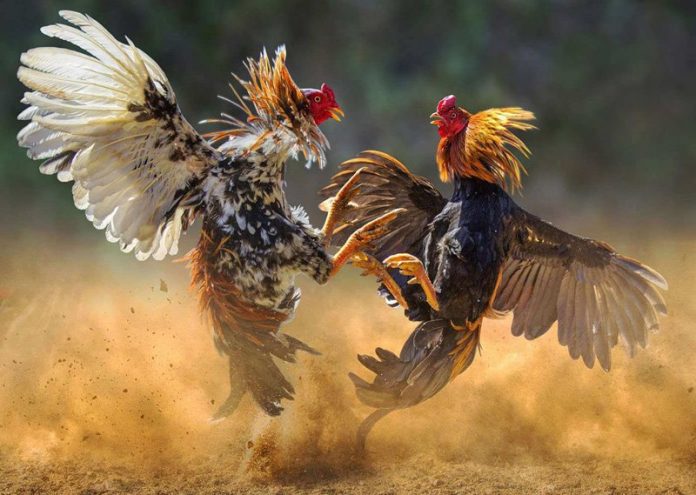Stories from the Arena: Legendary Cockfighting Showdowns

Cockfighting has long captivated audiences with its intense displays of animal skills and tactics. This age-old sport, steeped in tradition and debate, serves as a window into cultural practices that date back thousands of years. From the colorful arenas filled with enthusiastic fans to the excitement that hangs in the air, the atmosphere surrounding a cockfighting event is electric. Enthusiasts gather to witness fierce battles between specially bred roosters, each one trained for agility, strength, and combat instinct.
As the roosters enter the ring, they embody the spirit of their trainers and the rich history behind this sport. Each bird’s unique lineage and fighting style contribute to the drama, making every match a testament to skill and preparation. While the ethical implications of cockfighting are heavily discussed, the stories from the ring highlight the complexities of this tradition, ensuring that its legacy continues to evoke passion and intrigue among both advocates and critics.
History of Gamecock Fighting
Gamecock fighting has longstanding history in human culture, with indications suggesting that it traces back many centuries. The initial records of this practice can be traced to old civilizations in Asia, especially in regions like India and China. Archaeological evidence indicate that birds were bred and reared for combat as far back as 2000 BC, indicating the enduring fascination with the sport. Its attraction expanded through mercantile routes, eventually making its way to the Mediterranean and the Roman civilization, where it became a popular form of leisure activity.
As time went on, cockfighting developed into a formalized sport with distinct rules and guidelines. In the 1500s, Britain began formalizing the activity, connecting it to community events and placing bets. The establishment of pit spaces dedicated to the sport contributed to its expansion in favor among the aristocracy. This era saw the introduction of distinct breeds, each strategically bred to boost fighting abilities. The activity became so ingrained in British culture that it was often associated with dignity and valor, drawing large crowds eager to witness the violent battles.
In the 1800s, the sport faced intensified scrutiny and law-related issues. Animal welfare advocates began to oppose the sport, emphasizing concerns about inhumane treatment and the care of the animals. By the end of the century, many nations enacted legislation forbidding the activity, leading to its decline in some areas. However, in different places, notably in parts of the Asian continent and Latin America, cockfighting continued to thrive, maintaining its status as a cultural tradition and an arena for social interaction. Despite the controversies, the history of cockfighting reflects a intricate relationship between humanity, competition, and the animal kingdom. RR88
The Art of Breeding Fighting Roosters
Breeding combat cocks is a detailed art that requires deep knowledge of heredity, temperament, and characteristics. Breeders often choose their fowl based on bloodlines, choosing males and females from established lines with favorable traits for fighting. The goal is to produce offspring that show power, quickness, and a competitive spirit. Care is given to the cocks’ attributes, such as muscle tone, feather condition, and beak strength, as these can significantly affect their performance in the ring.
The breeding process starts with careful selection and pairing of birds, often taking place in dedicated facilities. Handlers keep track of bloodlines and performance records, making sure that they can anticipate the capability of their hatchlings. It is not just about picking the strongest birds; temperament is just as crucial. A fighting rooster must have not only fierceness but also the ability to remain focused and composed during a bout. This complexity makes raising an ongoing challenge that demands commitment and skill.
After the eggs hatch, breeders closely monitor the young birds' development, assessing their developmental stages and fighting instinct. This stage is essential for identifying potential fighters that will eventually take to the ring. Proper nutrition and training begin early to condition the young cocks for their future fights. Handlers invest considerable time and resources to nurture their fowl, all in the hope of breeding the ultimate fighter that embodies the spirit of cockfighting.
Iconic Fights and Notable Competitors
The history of cockfighting is rich with stories of epic battles that have enchanted spectators for ages. One of the most distinguished fighters in the arena is a bird named "El Gallo de Oro," who gained fame for his unmatched speed and agility in the ring. His bouts were frequently described as thrilling, with spectators cheering wildly as he outmaneuvered opponents. This iconic rooster became a icon of strength and resilience, inspiring many aspiring fighters to prepare their birds with the dreams of achieving similar success.
Another unforgettable matchup took place in a small town where two competing trainers, known for their fierce competition, pitted their best roosters against each other in a high-stakes duel. The event drew a large crowd, eager to witness the clash of titans, and both birds entered the ring with an unyielding spirit. The battle was fierce, with feathers flying and the roosters displaying remarkable skill and bravery. In the end, the long-reigning champion was overthrown, marking a memorable upset that would be talked about for years to come.
Influential trainers also played a significant role in shaping the myths of cockfighting. One such figure, known as "The Rooster Whisperer," was renowned for his unique training methods and deep bond with his birds. His fighters consistently dominated the competition, and his influence transformed the way many approached the sport. Through his commitment and zeal, he not only bred extraordinary fighters but also instilled a sense of camaraderie among fellow trainers, leaving a lasting legacy in the world of cockfighting.





